Review: Motorola Z Droid, Z Force Droid for Verizon Wireless
Jul 21, 2016, 8:00 AM by Eric M. Zeman
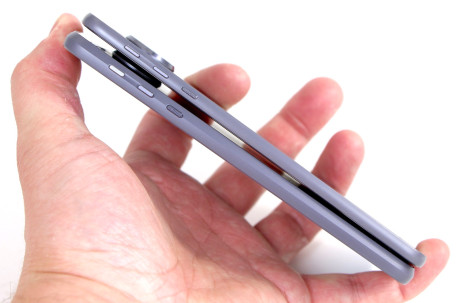
Motorola's flagship smartphones for 2016 are the Moto Z Droid and Moto Z Force Droid for Verizon Wireless. These Android smartphone are unique thanks to their slim, metal designs and swappable modular back panels. Here is Phonescoop's full review of these handsome handsets.
Hardware
Is It Your Type
Motorola is back with another series of Droids for Verizon. The Moto Z Droid Edition and Moto Z Force Droid Edition are thin, light, and powerful smartphones that are unique thanks to their swappable rear accessories. For Verizon customers who prefer Android over iOS, the premium Droid series from Motorola is a compelling option to Samsung's Galaxy S7 and LG's G5 smartphones.
Body
The Moto Z and Z Force represent some of Motorola's finest thinking. These flagship smartphones include every possible feature and somehow manage to squeeze them into some of the thinnest handsets out there. Moreover, Motorola's ecosystem of swappable back plates — many adding unique functionality to the phones — is well conceived and executed.
The Z and Z Force are nearly identical. The Force has a tougher display and bigger battery, which makes the phone thicker and heavier. Other than the thickness, there is no outward or obvious difference between the two.
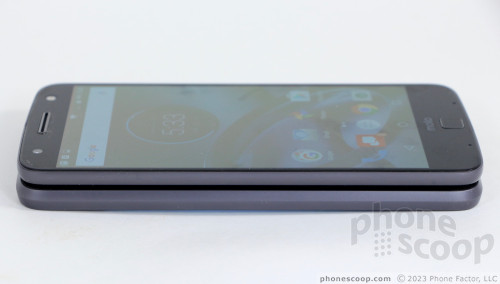
Made of metal and glass, the Zs look high tech. The face is 2.5D curved glass that's fitted precisely into a machined metal frame. The rear has glass and metal panels, and a series of copper-colored contacts. The absolutely huge camera module looks like a robot eye, staring at you. These phones scream modernity; they are cutting edge.
The Moto Z is about same size as last year's Moto X and many other big-screened phones. At 5.2mm thick, it's one of the slimmest smartphones around. Seriously, everyone I've seen hold one has expressed shock at how thin it is. The Z Force is a hair bigger at 7mm thick. The Moto Zs are two-handed phones and may not work for people with small hands. The Moto Z fits into most pockets quite easily. The Z Force is more noticeable when you carry it around, but only because it's heavier.
The materials, manufacturing, and quality are top notch. The frame hugs the front glass tightly, and the three major pieces of the rear panel (glass, metal, glass) are slotted together perfectly. The phones look and feel every bit the flagships they are. The Z and Z Force are on par with the excellent build of Samsung's Galaxy S7.
Motorola maximized the screen real estate on the front of the phone; bezels are at a minimum. A raised lip signals the location of the earpiece above the screen. The user-facing camera is off to the left, while the selfie flash is off to the right. It is easy to spot the square-shaped fingerprint reader below the screen. The Moto Zs don't use physical buttons and instead rely on in-screen controls for the Android operating system.
I really like the metal frame, which is smooth all the way around. All the buttons are on the right edge of the phone. The screen lock button is the first button your thumb encounters as is slides up the side. The button is small, but has a sharp, ribbed texture that make it easy to find. Travel and feedback are good. The volume controls have been separated into two buttons. These keys have a smooth texture to differentiate them from the lock screen button, but are about the same size/shape and deliver the same travel and feedback. When you're in a hurry, it is easy to mistake one for the other. The dual-purpose SIM card / memory card tray is tucked into the top edge.
Motorola is one of the first phone makers to drop the trusty 3.5mm headset jack completely. Instead, the Moto Zs have a single, all-purpose USB Type-C port for charging, data transfer, and music output. This is sure to be a dealbreaker for some. I have mixed feelings about it.
There's no arguing that USB-C is the future, but breaking with legacy technology introduces a host of inconveniences. You can't simply plug the Z into your stereo or car and expect it to just work. Motorola is including a 3.5mm adaptor dongle with the Moto Z, which means it will still work with most headphones and other accessories as long as you remember the dongle.
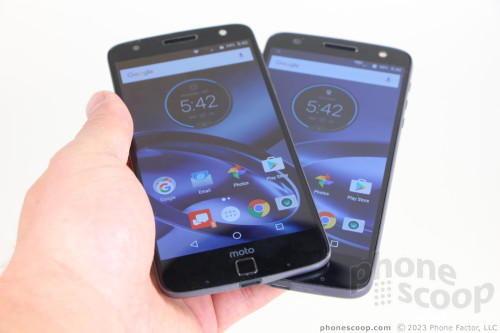
Motorola contends that more people are using Bluetooth headsets. That's certainly true in my case. I've fully moved from wired to wireless headphones, be they earbuds for exercising or over-the-ear cans for high quality listening. I've come to prioritize the convenience of no wires, despite the differences in audio quality. Bluetooth headsets have their own issues. For example, you need to remember to charge them, and you can't use them everywhere, such as on airplanes. Whatever side of the debate you fall on, the Moto Z and Z Force are looking forward, not backward.
The Moto Z's rear panel is certainly unique. Two things stand out: the camera and the contacts. The camera module is huge and juts out of the surface like a stack of quarters. A reflective rim calls your eyes to it. The "Droid" branding is crammed in between the lens and the two-tone LED flash tucked into the bottom of the circle.
Motorola's proprietary magnetic module connector is positioned near the bottom of the rear panel. There are two stacks of eight pins separated by a notch to help position the modules. A solid metal bar underlines the entire array. Motorola says it engineered the heck out of this magnetic system. Indeed, the magnets seem incredibly strong and robust.
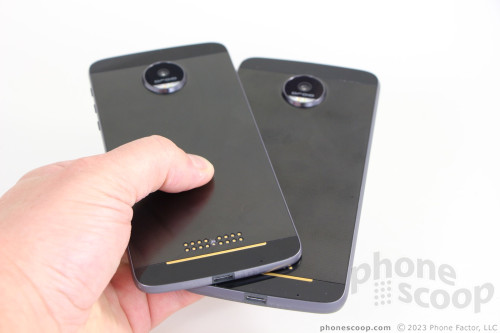
The metal panel between the camera and magnets has a barely-there ribbed texture. It's about the only thing I don't like about the phone's design. I'd prefer to see a solid paint job/texture.
Given the super-thin profile of the Z, it should go without saying that the rear panel cannot be removed and neither can the battery. That may be a dealbreaker for some.
Motorola did a bang-up job with the Moto Z and Z Force. The company has never designed more attractive, more appealing hardware.
Screen
The Moto Z and Z Force both feature 5.5-inch quad-HD screens (2,560 by 1,440 pixels). The Force model includes second-generation Shattershield "unbreakable" glass. Even so, the two displays look identical to my eyes in terms of brightness, resolution, and color. I studied them side-by-side intensely and concluded they are equal. The resolution is excellent and makes the Z series good for virtual reality applications. The brightness is excellent for indoor use, but just adequate for outdoor use. You need to boost the brightness all the way in order to see the screen under sunny skies. Color accuracy is quite good, as are viewing angles. I didn't see any brightness shift, nor color change when I tilted the phones back and forth. Bottom line: the Moto Z and Z Force have good screens.
Signal
These phones are signal champs. The Zs remained on Verizon's LTE network at all times; not once did they lose signal nor ever drop to 3G. The phones always maintained a solid connection to Big Red's network. I was able to make calls everywhere I took the Z and Z Force and the phones held calls at highway speeds easily. Data speeds were quite good when it came time to upload images to Instagram or download apps from the Play Store. The phones streamed high-quality YouTube videos and Spotify tracks without any hiccups.
Sound
Call quality is average. The Zs are decent phones for making calls, but far from the best. Earpiece volume is the biggest issue. I was able to hear calls in my home and office. But coffee shops, city streets, and other environments produced enough noise to drown out conversations. Clarity is not great, either. I noticed a bit of distortion that clouded conversations from time to time. People I spoke to through the Moto Z and Z Force said I sounded "far away."
The speakerphone offers a solution. The earpiece doubles as the speakerphone. When used as a traditional speakerphone (phone on a table/desk while you sit or stand nearby), the Z is acceptable. The speaker produces enough sound for convos in quiet spaces, but not loud spots. I found that using the speakerphone at a low volume while holding it directly to your ear presented the best solution when you really need to hear calls. Clarity via the speakerphone mirrors that of the earpiece.
The Z and Z Force include Verizon's Advanced Calling app, which delivers HD Voice over VoLTE. Call quality via HD Voice was far clearer than over Verizon's regular voice network, but HD Voice couldn't help improve the volume issue.
Ringers and alert tones could definitely be louder, but the vibrate alert always got my attention.
Battery
Motorola says both the Moto Z and Z Force offer more than a full day of battery life, and that's the truth. The Moto Z (with a 2,600 mAh battery) consistently got me from breakfast to bedtime with some power to spare. I had a hard time getting the Moto Z's battery down to 15%, let alone depleted completely. The Z Force (with a 3,000 mAh battery) pushed even further into a second day. Motorola has always prioritized battery life for its Droid handsets, and the proof is in the pudding. The battery life is so good, it almost makes me wonder why one of the Moto Mods is a battery pack.
The phone includes only the simply Android battery tool. This can be set to come on automatically, or switched on/off when needed. It reduces processor output, dims the screen, and cuts down notifications.
Both phones support rapid charging via the USB-C port. Motorola says 15 minutes of charging adds 8 hours of life to the Z and 15 hours of life to the Z Force. I can tell you that the phones top up very quickly.
Bluetooth, GPS, NFC, WiFi
With no 3.5mm headphone jack, the Bluetooth radio needs to perform flawlessly. It's a good thing, then, that the Moto Z and Z Force offer excellent Bluetooth functionality. Pairing with other devices via the system menu was easy enough, but I resorted to NFC-aided pairing whenever possible. I connected the Zs to speakers, headphones, PCs, and my car with little effort. Call quality was surprisingly good when pushed through a dedicated headset. Music sounded excellent through a pair of Bluetooth speakers I've been testing.
The NFC radio supports Bluetooth pairing, as noted, but also works with Android Pay for mobile payments.
Google Maps made excellent use of the Z's GPS radio. The phones found me in a blink and worked great as live navigation tools when driving from Point A to Point B.
WiFi performance was good.
Software
Lock Screen
Motorola's lock screen has been among the industry's best for several years. Thankfully, Verizon Wireless did not mess with it in these Droid Editions.
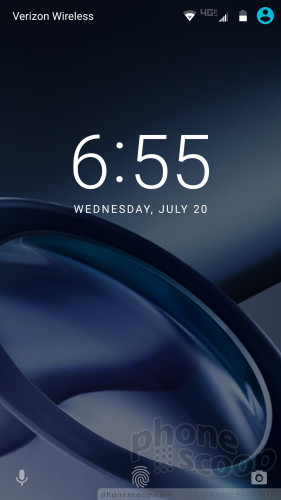
Notifications and other lock screen behaviors are now managed from a single spot, the Moto App. Moto Display can wake the screen regularly with a list of the current notifications, or show important notifications on the lock screen as they arrive, or leave the screen entirely dark. It's up to you. Double tap the screen or wave your hand over the phone any time to see the time and notifications in list form.
If you press the screen lock button, the display wakes fully to show the clock, wallpaper, and notifications listed below the clock. There are also shortcuts to the phone and camera on this screen.
As far as security goes, both the Moto Z and Z Force include the trusty PIN, pattern, and password options, as well as a fingerprint reader.
I found the reader of our Moto Z to be incredibly unreliable. Even after testing several different fingerprints, I estimate first-time accuracy to be about 10%. It often didn't recognize recorded fingerprints at all. The Z Force performed more normally. Motorola believes our Z review unit may have a faulty reader. Since our Z Force worked fine, that may well be the case.
Home Screens
I was worried to death that Verizon and Motorola would over-do the software skin on the Droid Editions, but those fears were unfounded. They ship with Android 6 Marshmallow. The device has two home screen panels active out of the box. Moto Z owners can customize the typical stuff, such as wallpapers, widgets, and so on.
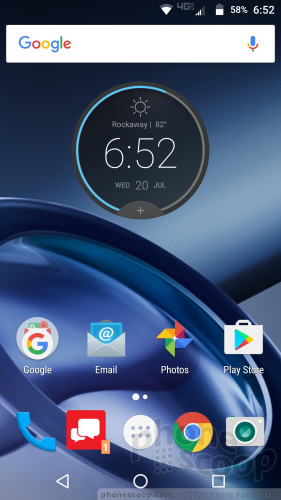
The home screen behaves as expected for an Android Marshmallow phone. Similarly, the app drawer, notification shade, and settings screens are all standard Android, and work accordingly. There are no themes or other fancy interface tricks on board.
Motorola did not stick the Google Now launcher on the Z as it did with the Moto G series phones, nor is there any other sort of alternate home screen experience (such as Easy Mode).
As for performance, the Moto Zs use a 2.2 GHz Snapdragon 820 processor with 4 GB of RAM. This is the best setup available at the moment and it works well when it comes time to motivate the Z. The phone never felt slow or bogged down, and was able to capture and view VR content without missing a beat. It's a fast phone.
Camera
The Z and Z Force use the new Motorola camera app (first seen on the 4th-gen Moto G.) Gone is the odd old camera interface with a semicircular control strip; in its place you'll see a much simpler and more accessible set of tools.
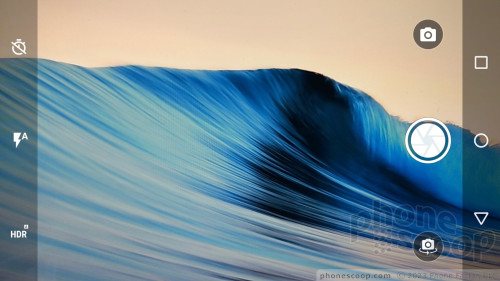
The Moto Z does not have a dedicated physical camera button, but there are several ways to open the camera: a twisting gesture, a double press of the screen lock button, or the lock screen shortcut. The double press of the lock button is the way to go as far as I'm concerned. It's the quickest and most reliable method for launching the camera.
The camera would seem to have hardly any features at all. There are three controls on the left side of the screen (timer, flash, HDR) and three on the right (mode, shutter, front camera). I like that both the flash and HDR tools can be set to on, off, or auto.
As for shooting modes, the Z offers auto, video, slo-mo, panorama, and manual. The manual mode lets you take full control over focus, ISO, shutter speed, brightness, and white balance. The controls line the top of the screen and are easy to adjust. It's a shame the shutter only lets you select speeds as slow as one-half of a second; that's hardly long enough to get creative. There's no 360 photo/video mode, which feels like an odd omission, nor is there any sort of GIF maker.
The default is always auto mode. Slide your finger up or down to zoom. Tap to focus and set exposure. Press the shutter button to take standard pictures, or press-and-hold to capture a burst. Swipe from the left side of the screen to access the settings.
The layout makes far more sense than the old camera app from Motorola. It's easy enough for novices to use effectively and flexible enough in manual mode to unleash at least some degree of creativity.
Photos/Video
Shared features between the camera hardware include apertures of f/1.8, optical image stabilization, laser-assisted focus, and pixels that measure 1.12 microns.
The standard Z has a 13-megapixel sensor and the Z Force has a 21-megapixel sensor. If you hold them side to side, the lens opening of the Z Force is noticeably bigger. The Z Force also adds phase-detection autofocus.
Both phones take pictures that range from good to very good. I was generally pleased with focus, exposure, and white balance. Low-light shots tended to have a bit of grain, but that was easily corrected with the two-tone flash.
The Z Force takes somewhat sharper images that you can blow up to bigger sizes, but this is offset some by the increased presence of grain. With more pixels, the Force offers more detail at full crop, but it's hardly a reason to buy the Force over the regular Z.
The selfie camera does all right, and includes a beautification mode to get rid of those imperfections. The selfie flash goes a long way to saving what might otherwise be unusable shots. The wide angle of view helps get more of the background in each shot.
The Z and Z Force both do well enough that you can use these phones for most of your photography needs.
Most people will be happy with the video they capture with the Z and Z Force. Both can capture up to 4K resolution, but as I often recommend, you can stick with the full HD setting most of the time. This represents the best balance between quality and file size.
Bloatware
The Moto Z Droid Edition and Moto Z Force Droid Edition are sold by Verizon Wireless, which means they are packed with lots of undeletable crap apps. As expected, Verizon-branded apps are the most numerous, with Caller ID, Cloud, Message+, my Verizon, NFL, Voicemail, VZ Navigator, and VZ Protect. Others include Amazon, Audible, Candy Crush, Cookie Jam, Farm Heroes, Juice Jam, and Slacker. Of these, only the games can be scrubbed entirely from the phone. The rest can be hidden and/or disabled, but not deleted.
The phones come with 32 GB of storage and support memory cards up to 2 TB. You shouldn't run into storage problems unless you start recording everything in 4K.
Moto Mods
The chief selling point of the Moto Z and Z Force is their compatibility with the Moto Mods ecosystem of swappable modules. They snap onto the back of the Z and Z Force with magnets. The Moto Mods are easy to attach and detach thanks to a notch built into the bottom of each. Don't worry about the mods falling off. They might pop off if you drop the phone, but they won't become dislodged during normal use.
Motorola said the mods and magnetic connector were designed to be robust. This includes hot-swapping, which means the Z isn't going to crash if you yank a mod off without warning.
At launch, there are a handful of Mods to check out, including a battery pack from Tumi, a set of speakers from JBL, a projector from Lenovo, and several dozen alternate rear plates.
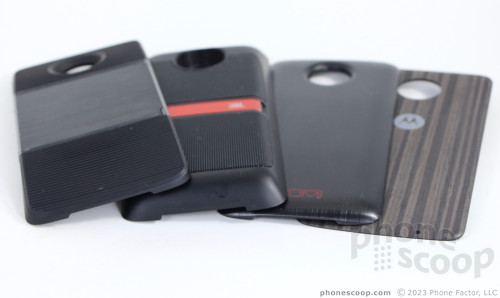
Tumi Power Pack
The Tumi Power Pack is a 2,220 mAh battery disguised as an alternate rear shell for the phone. As far as battery packs go, the Tumi Power Pack is one of the most usable thanks to a foolproof design.
The mod itself is made of plastic and has a grainy texture to it. It is black, sleek, and flows seamlessly with the design of the Moto Z. The curved shape helps the Z fit deep in your palm. Like all battery packs that attach to phones, the Tumi adds bulk and weight to the Z, but the phone is already so slim that the size increase is well within reason.
Personally, I would change a few things.
First, the Tumi can't be charged separately. It has no USB port or other input other than the magnetic connector on the back. That means you have to attach it to the Moto Z to charge it. I wish the battery pack had its own plug. Also, the Moto Z's quick-charging powers don't seem to apply to the Tumi. If you plug the pair into a charger, the Tumi charges first (slowly), and then the phone charges. You might be better off to take advantage of the phone's rapid charging to get it to 100% before slapping the Tumi on to charge it.
The second is the capacity. Granted, many external batteries seem to hover around the 2,200 mAh size, but I guess I'm surprised Tumi didn't go for broke and push the capacity to 3,000 mAh or more, which would have delivered a full charge to the stock battery of both the Z and Z Force.
Last, there's no way to tell how much charge the Tumi has unless it is connected to the Moto Z. Some indicator lights would be helpful. The Tumi shows up in the settings tools so you can manage it.
Tumi claims the power pack adds 22 hours of life to the already-excellent battery in both phones. I envision it being most useful when you're trapped on a long international flight and have only your phone to keep you from losing your mind while aloft.
Tumi's Power Pack costs $60. A similar, but more fashionable one, from Kate Spade New York costs $90.
JBL SoundBoost Speaker
The SoundBoost speaker from JBL adds a pair of 3-watt drivers to the rear of the Moto Z, turning it into a miniature boombox. Let me tell you, this thing rocks.
The SoundBoost is rather chunky and adds considerable bulk and weight to the Moto Z. In fact, I would not walk around with the JBL attached. I might keep it in a briefcase or backpack for those moments when I want more sound than a standard phone speaker can deliver.
The mod contains two speakers and its own battery (good for 10 hours of playback). You can charge the JBL through a USB-C port. Oddly, the port is hidden on the underside and not tucked into one of the side edges. The JBL's best feature is perhaps the red, metal kickstand that flips out and lets the Moto Z stand up on a desk or table.
How does the music sound? Not bad at all. There are some obvious limitations given the size constraints here, but the JBL puts out enough sound to fill two rooms with music. I enjoyed using the JBL to listen to some Spotify music while preparing dinner one evening. It's not quite as effective outside, but you can still fill a deck or picnic area with music if you crank it up. You're not going to piss off the neighbors with thundering bass beats. Speaking of which, the sound is a bit on the thin side; I wish it delivered a bit more low-end punch.
It's a shame the clock and notifications won't/don't auto-rotate to match the Moto Z's landscape orientation when it's attached to the JBL, otherwise the Moto Z would make a great desk or alarm clock.
The JBL is a neat little accessory to have handy, because you never know when a spontaneous dance party is going to go down.
The JBL SoundBoost Speaker costs $80 — which is a bit more than a separate Bluetooth speaker of the same size would cost.
Lenovo Insta-Share Projector
This thing is crazy-ville. The Lenovo Insta-Share Projector turns the Moto Z into a miniature movie theater. It can project images up to 70 inches at 50 lumens. The projector includes a kickstand and automatic keystone correction to account for projecting at nearly any angle.
Of the mods announced by Motorola, the projector is easily the largest. Not only does it contain the bulb and kickstand, but it also crams a small fan, speaker, and battery into the curved form. Like the JBL, you're not going to walk around with the Insta-Share attached to your phone. No, this is a mod that business people or media addicts may toss in their bag for presentations or impromptu YouTube sessions.
The projector's battery can power up to 1 hour of viewing time, but relies on the Moto Z's internal battery beyond that. Thankfully the projector has a USB port on the side so it can be charged in its own.
Is it really bright and really loud? No, but it's bright enough and loud enough. You can use it indoors during the daytime, for example, as long as you find a spot not illuminated by direct sunlight. It works really well in darkened spaces after sunset. It pumps out enough sound that everyone in the room can easily hear the action.
The resolution isn't the best, and — while 70 inches is bigger than most TVs — the picture is hard to see from more than about 15 feet away. The resolution and brightness improve if you move the Moto Z closer to the surface onto which you're projecting.
You have to focus the projector manually. It has an infinity setting that allows it to be reasonably sharp at modest distances, but you have to adjust the focus dial on the right edge as you move the phone closer to the screen.
As noted earlier, you can pull the projector off the Moto Z in mid-viewing and it won't crash the projector or the phone. Whatever video app you're using will simply resume on the phone's screen. Speaking of which, the screen goes dark when you're watching via the projector, but you can tap to wake it back up to choose another video without interrupting the projector.
As far as portable projectors go, the Insta-Share definitely delivers. Few are so small, usable, and effective.
The Lenovo Insta-Share Projector costs hefty $299.
Rear Covers
If you want to protect the Moto Z a bit, or simply want to change up the phone's appearance, you're in luck. Motorola itself has made a wide variety of rear covers made of wood, leather, felt, and other materials that attach to the back like any other mod. I thought the wood mods felt a little cheap, but the leather ones were rather hot. The Moto Z will ship with one spare cover in the box. Beyond that, you can buy them where the phone is sold.
Incipio is making some back plates, too, including soft touch, iridescent, and metallic. Incipio's covers run $15.
Wrap-Up
The Moto Z and Moto Z Force are a compelling achievement from Motorola that represent years' worth of development and effort. I think they pay off. Motorola created its most advanced and sophisticated phones to date in the new Moto Z series and Moto Mods accessories.
By themselves, the metal-and-glass designs of the Moto Z and Moto Z Force are slim, attractive, and well-made. Each offers a good screen, quick wireless speeds, and excellent battery life. I wish call quality were better, but I've heard worse. It's a marvel to see a near-stock version of Android on a Verizon handset; I appreciate that. The camera app is good enough, and both phones take average photos for this (high) class of device. I think the iPhone 6s and Galaxy S7 are better, but the Droids are still solid.
The Moto Mods ecosystem is off to a strong start with the battery packs, speakers, projectors, and spare back plates. Motorola is already offering twice as many useful modules as the LG G5. Still, Motorola needs to convince more companies to hop aboard to expand the ecosystem as quickly as possible. It would be easy to understand if some accessory makers take a wait-and-see approach, but Motorola promises the Moto Mods template is future-proof.
As with all nice things, the new Droids don't come cheap. The Moto Z Droid Edition is $625 and the Moto Z Force Droid Edition is $720. The latter definitely provides a bump in battery life and photo quality, but comes at the expense of thickness, weight, and $100.
For Verizon-bound Android lovers who want an alternate to Galaxy handsets, the Motorola Droids are an excellent option. (Not on Verizon? Motorola says unlocked variants will become available in September or October.)
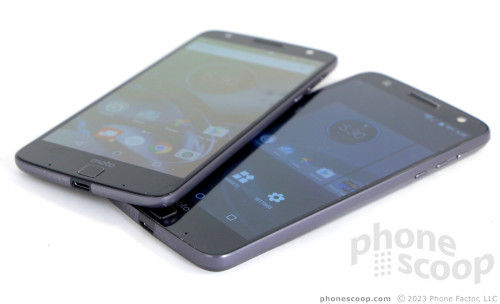
Comments
Not cheap
(continues)
No headphone jack = non starter
They already have to have a bulge near the top of the phone for the camera, why not extend that enough to have the headphone jack?
Give me a phone that is 1/3 thicker for 2x the battery life anytime. Too much vanity over functionality!
Very nice but...
But what I'd really like, is a smaller version of this phone. This size is simply way too large for most people! Why not offer a 5.0" (or better a 4.6") screen size with 1080p screen for smaller hands. I'm sure they will have a winner as many people will go for it.
Think about it, Moto!


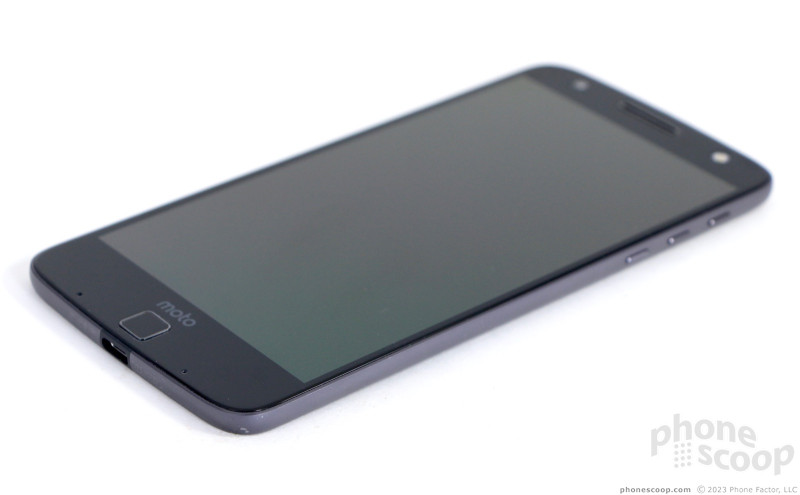


















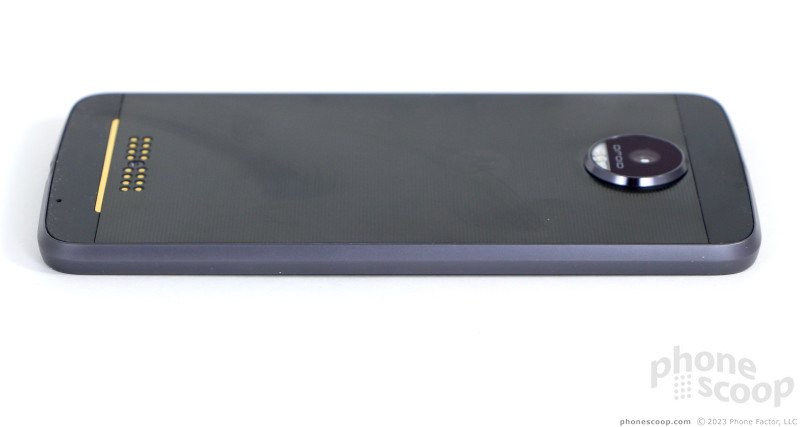






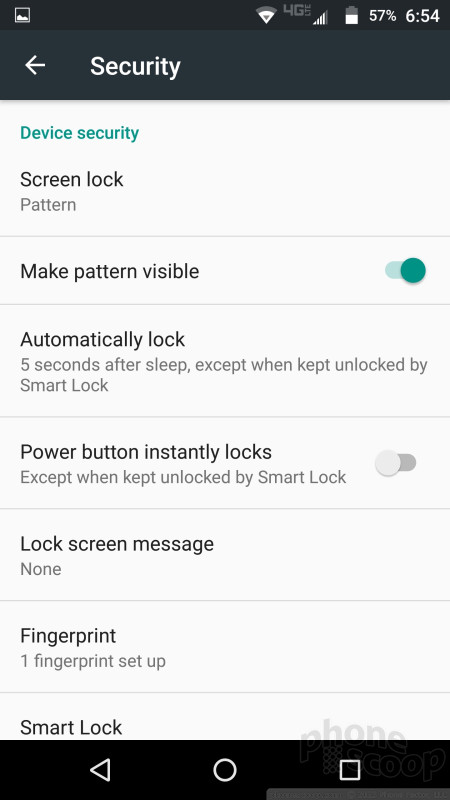





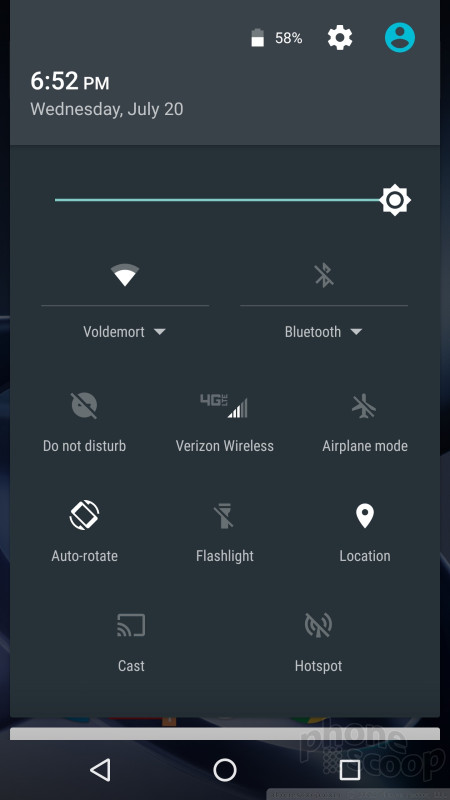






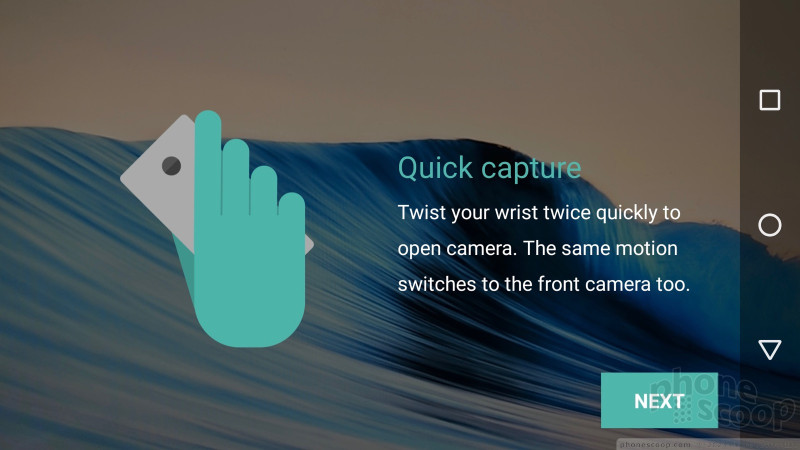























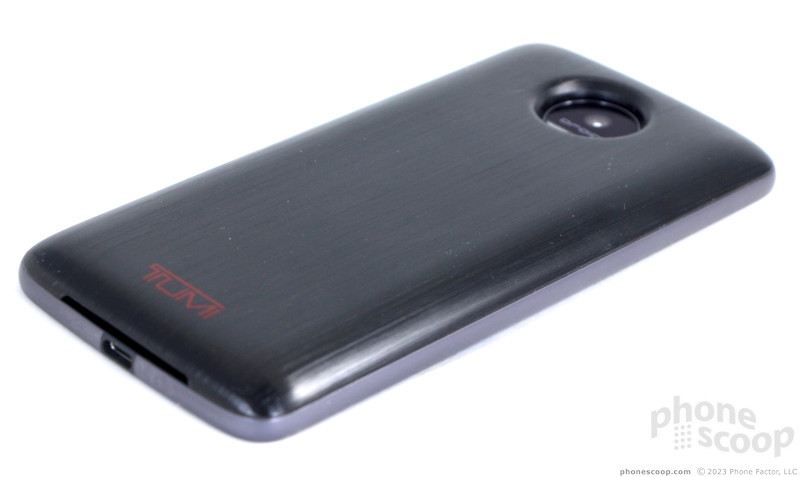





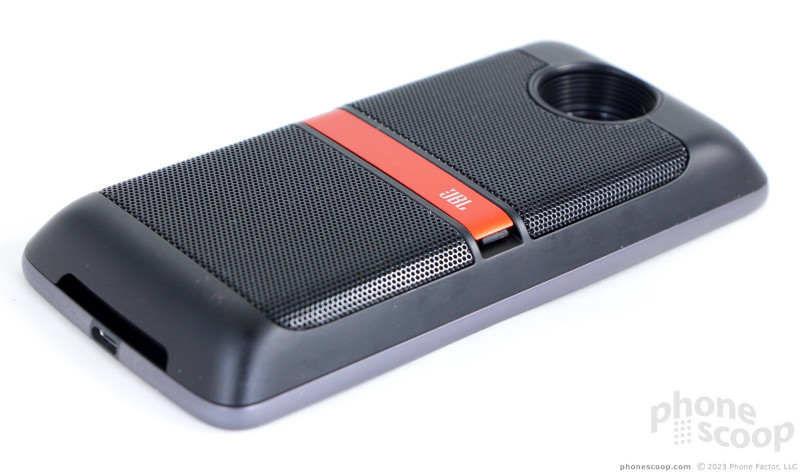















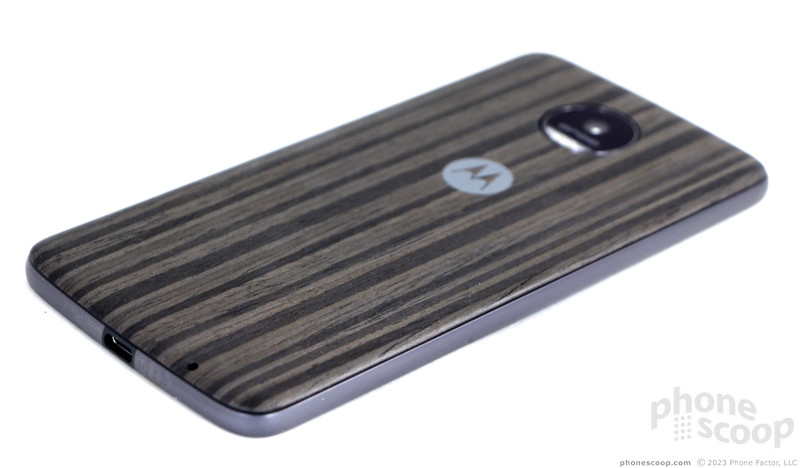




 Hands On With Moto Z Droid and Z Droid Force
Hands On With Moto Z Droid and Z Droid Force
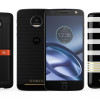 Motorola Debuts New Droid Zs with Swappable Back Modules
Motorola Debuts New Droid Zs with Swappable Back Modules
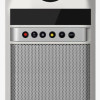 Motorola Announces Moto Mods Finalists
Motorola Announces Moto Mods Finalists
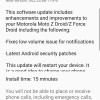 Verizon's Moto Z Droid Scores Security Update
Verizon's Moto Z Droid Scores Security Update
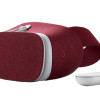 Google Improves the Selection of Daydream VR Apps
Google Improves the Selection of Daydream VR Apps
 Motorola Moto Z Droid
Motorola Moto Z Droid
 Motorola Moto Z Force Droid
Motorola Moto Z Force Droid





